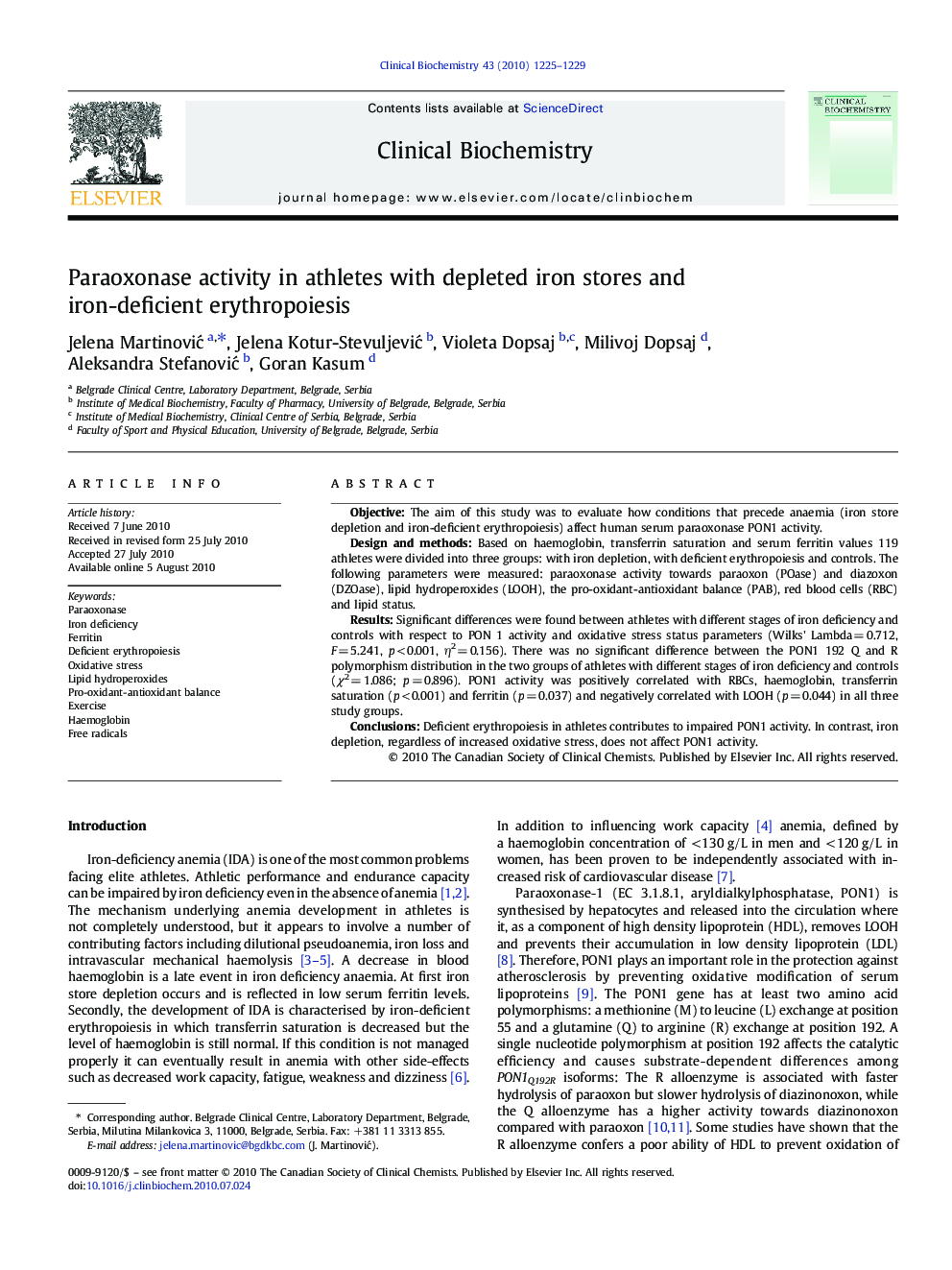| Article ID | Journal | Published Year | Pages | File Type |
|---|---|---|---|---|
| 1971106 | Clinical Biochemistry | 2010 | 5 Pages |
ObjectiveThe aim of this study was to evaluate how conditions that precede anaemia (iron store depletion and iron-deficient erythropoiesis) affect human serum paraoxonase PON1 activity.Design and methodsBased on haemoglobin, transferrin saturation and serum ferritin values 119 athletes were divided into three groups: with iron depletion, with deficient erythropoiesis and controls. The following parameters were measured: paraoxonase activity towards paraoxon (POase) and diazoxon (DZOase), lipid hydroperoxides (LOOH), the pro-oxidant-antioxidant balance (PAB), red blood cells (RBC) and lipid status.ResultsSignificant differences were found between athletes with different stages of iron deficiency and controls with respect to PON 1 activity and oxidative stress status parameters (Wilks' Lambda = 0.712, F = 5.241, p < 0.001, η2 = 0.156). There was no significant difference between the PON1 192 Q and R polymorphism distribution in the two groups of athletes with different stages of iron deficiency and controls (χ2 = 1.086; p = 0.896). PON1 activity was positively correlated with RBCs, haemoglobin, transferrin saturation (p < 0.001) and ferritin (p = 0.037) and negatively correlated with LOOH (p = 0.044) in all three study groups.ConclusionsDeficient erythropoiesis in athletes contributes to impaired PON1 activity. In contrast, iron depletion, regardless of increased oxidative stress, does not affect PON1 activity.
